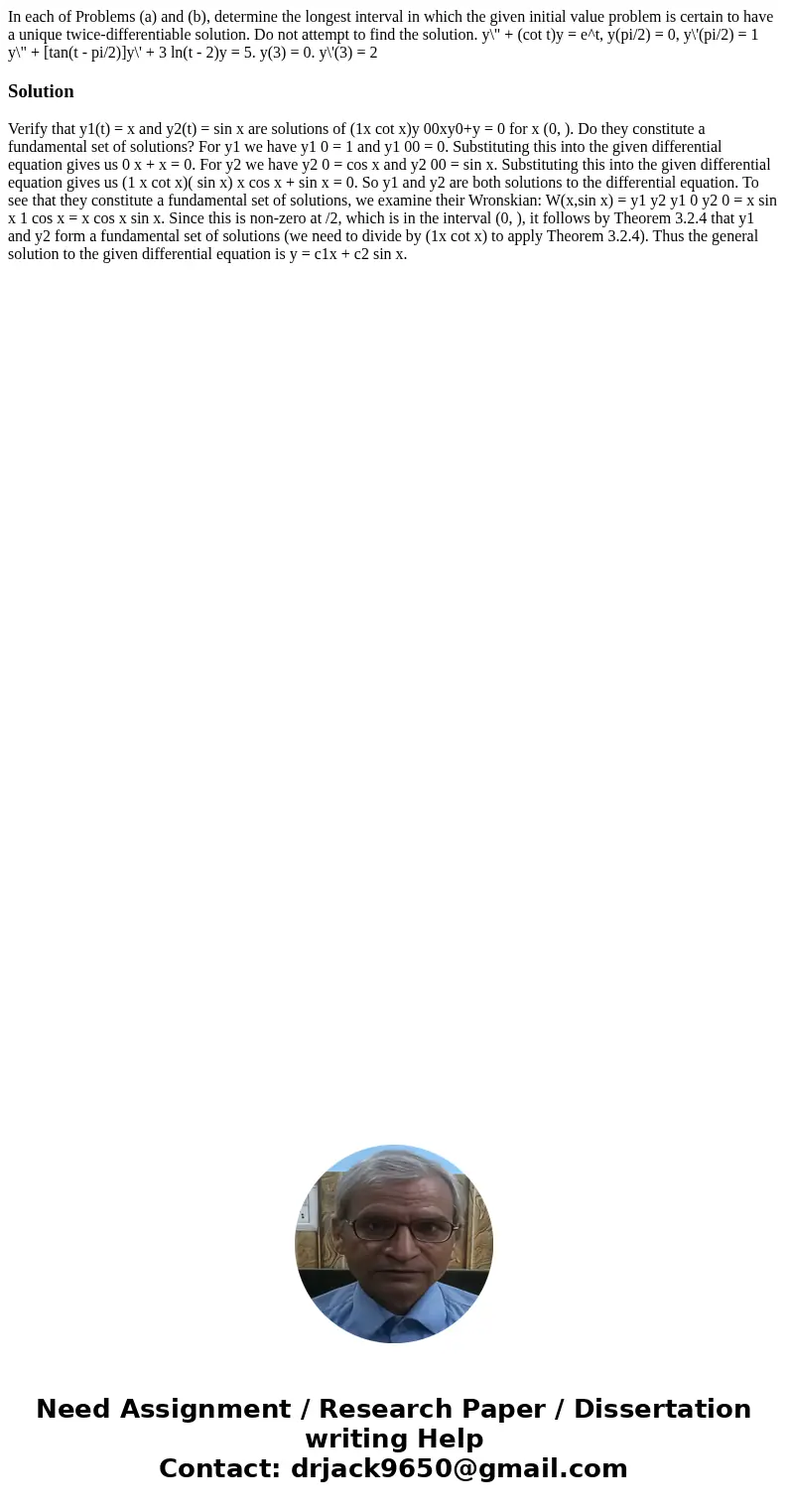In each of Problems a and b determine the longest interval i
Solution
Verify that y1(t) = x and y2(t) = sin x are solutions of (1x cot x)y 00xy0+y = 0 for x (0, ). Do they constitute a fundamental set of solutions? For y1 we have y1 0 = 1 and y1 00 = 0. Substituting this into the given differential equation gives us 0 x + x = 0. For y2 we have y2 0 = cos x and y2 00 = sin x. Substituting this into the given differential equation gives us (1 x cot x)( sin x) x cos x + sin x = 0. So y1 and y2 are both solutions to the differential equation. To see that they constitute a fundamental set of solutions, we examine their Wronskian: W(x,sin x) = y1 y2 y1 0 y2 0 = x sin x 1 cos x = x cos x sin x. Since this is non-zero at /2, which is in the interval (0, ), it follows by Theorem 3.2.4 that y1 and y2 form a fundamental set of solutions (we need to divide by (1x cot x) to apply Theorem 3.2.4). Thus the general solution to the given differential equation is y = c1x + c2 sin x.

 Homework Sourse
Homework Sourse